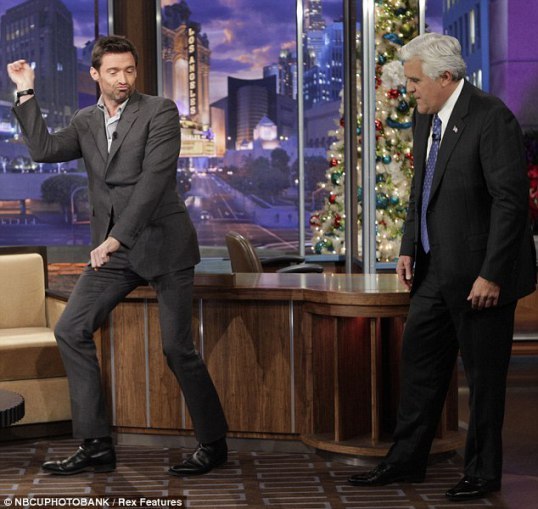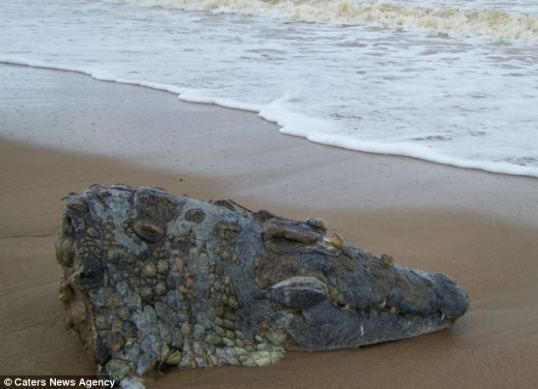Tyson Adams's Blog, page 65
July 29, 2015
One of the annoying things about movies
With the recent spate of superhero movies it is easy to forget that not every movie has a superhero in it. Even the superhero films aren’t always about someone on steroids (Captain America) or weather presenters (Thor) but are instead about your everyday billionaire playboy (Batman, Ironman, Arrow). So it is easy to forget that feats of superhuman strength are not meant to be the norm in films.
Think about the scenes where the everyday hero is clutching the edge of a building by his fingertips whilst the love interest or bad guy is dangling from their other hand. Of course, the hero never loses his grip on the ledge, but the bad guy may slip from his grasp.
We accept that scene as plausible because we have been brainwashed into thinking that the average person can hold their own bodyweight with a single hand for extended periods. Double their bodyweight? They can hold that for the length of a dramatic moment – a period of time that is impossible to measure in real time since dramatic speeches and slow motion really mess with reality.
The problem is that outside of gymnasts, rock climbers, or people who crush rocks with their bare hands for a living, the Average Joe wouldn’t even be able to hold their own weight for more than a few seconds, especially not if they caught themselves from a fall. Elite grip strength can be measured a few ways, but the Captains of Crush grippers are one easy way to distinguish strong hands. The #1 requires 64kg (140lbs) of force to close, while the #3 gripper takes 127kg (280lbs) and is regarded as world class grip strength. Just for shits and giggles they made a #4 gripper that requires 166kg (365lb) of force to close and has been officially closed by 5 people. Ever.
So let’s just assume that our generic action movie has an everyday hero who weighs a buff 80kg and his falling love interest is a sexy 55kg. That’s 135kg hanging from the hero’s fingertips, a weight that even a really strong person wouldn’t have the grip strength to support. Two normal sized adults are not going to be hanging onto that ledge for any length of time.
Which brings us to the next amazing feat of strength in this scenario: lifting that falling love interest back to safety. For a strong person, the 55kg gravity lover isn’t exactly heavy. A buff 80kg hero could probably clean and jerk a dumbbell weighing that much…. assuming they work out, have some chalk on their hands, were able to get some leg drive happening, had decent technique, and that the dumbbell wasn’t particularly unwieldy. But most falling love interests are a tad unwieldy, not designed for easy lifting – no obvious knurled handles – and there isn’t a lot of leg drive happening when you’re dangling from the side of a building by your fingertips. Yet without fail, the hero manages to get them both to safety. Well, unless it is one of those tragic character defining moments, in which case the hero will be in the same situation later and will find the determination to succeed the second time. Sucks to be the first love interest in that scenario.
Interesting to think about just how many amazing feats of strength are passed off as normal in movies.
Tagged: Arrow, Batman, Captain America, Captains of Crush Grippers, Cliffhanger, Damsel in distress, everyday hero, Fingertips, grip strength, Hero, How It Should Have Ended, Humor, Humour, Ironman, Love interest, Movies, Reality, reality land, Right What You No, Superhero, superhero films, superhero movies, Superheroes, superhuman strength, Thor, TV, Tyson Adams

July 24, 2015
Book vs Movie: X-Men Days of Future Past – What’s the difference
The latest instalment of Cinefix’s What’s the Difference is out. This time they tackle the ridiculously named X-Men: Days of Future Past.
So this is one book in the book vs movie series that I haven’t read. Although, in my defence, the Marvel Comic Universe is such an overlapping, rebooted, reshaped, alternate-time-lined, mish-mash of ridiculous proportions that it probably wouldn’t matter if I had. Watching the breakdown it becomes obvious that the screenwriters did a good job of streamlining the plot and picking characters who would work for the movie adaptation. Less clear is why the movie got so lazy with the “and then he woke up” ending.
Tagged: Book to movie, Book vs Movie, CineFix, Comic, Hugh Jackman, Marvel comics, Marvel Comics Universe, MCU, Movie, Right What You No, Time travel, Tyson Adams, What's the difference, Wolverine, X-Men

July 2, 2015
Book vs Movie: 2001 A Space Odyssey – What’s the difference
The Cinefix team are back once again with their series on movies based on books. This instalment is in two parts and is slightly different. 2001: A Space Odyssey wasn’t so much a movie based upon a book as much as it was a collaboration between Kubrick and Clarke.
I think the summary in the second video (from about 9:40 onward) encapsulates the main differences between the book and the movie nicely. Essentially Kubrick dispensed with the pedantic explanations and descriptions in favour of stunning visuals and esoteric story telling. Whereas Clarke made that esoteric story telling understandable with all the motivations and insights. I.e. to understand the film read the book, to experience the book watch the film.
Tagged: 2001: A Space Odyssey, Arthur C Clarke, Book to movie, Book versus Movie, Book vs film, Book vs Movie, CineFix, Kubrick, movies based on books, Right What You No, Stanley Kubrick, Tyson Adams, What's the difference, Youtube

June 4, 2015
Book vs Movie: Watchmen – What’s the difference
Another great breakdown of the differences between the book and the movie from Cinefix. This time it is Alan Moore’s Watchmen.
If I’m honest I’d have to say I prefer the movie over the book in this instance. I liked both, but I thought the changes they made for the movie made for better spectacle and entertainment. Obviously that wasn’t Moore’s original intention, so it is unsurprising that fans were annoyed with these changes. I felt that Snyder’s adaptation remained relatively faithful to the source material whilst also creating a film that cinema goers would enjoy. This is the hard path to tread in any adaptation: making sure the film works but remains true to the source.
Of course Snyder managed to make a film that people didn’t watch in the cinema and that fans of the book complained about. Guess there is just no pleasing some people.
Tagged: Adaptation, Alan Moore, Book adaptation, Book to movie, Book versus Movie, Book vs Movie, CineFix, Plot differences, Right What You No, Tyson Adams, Watchmen, Youtube, Zach Snyder

June 2, 2015
One (of the many) problems of arguing with science deniers
In a recent post I discussed some points about how to spot anti-science nonsense. Pick a subject, any subject, and there will be someone – probably Alex Jones – making an outrageous claim about it. But don’t worry, they’ll solve the problem with items available from their reasonably priced store: $1440 per litre is a bargain price for something you don’t need and doesn’t do as claimed.

Credit: Jason Hymes
Obviously scammers are gonna scam, and anti-scientists are going to not-science. The thing is once you understand that something is wrong you have some responsibility to make sure the misinformation doesn’t spread like a leaky diaper. With great power knowledge comes great responsibility. Which means you have to start discussing science with science deniers. Don’t forget to place a cushion on your desk and wear padded gloves.
Despite having the advantage of science/facts in the argument against science deniers, you have the decided disadvantage that you can’t just make stuff up (despite how tempting and financially rewarding it is). In fact you have to be better informed about not only your side of the argument but also about the science denier’s arguments.
Sounds odd, doesn’t it? You have to learn nonsense to talk about science. That makes as much sense as being pro-life and pro-death penalty. Bear with me here. Take this example of climate change denier Bret Stephens arguing against Bill Maher on Real Time:
Bret sounds convincing, doesn’t he? Bret sure thinks so. He makes some vague references to headlines from the 1930s and 1970s as dismissals of current concerns about oceans. Then he references an economic study on environmental policy priorities, all whilst looking very smug and sure of himself. These statements leave Bill at a stumbling point because he has to admit he doesn’t know what the hell Bret is talking about. The video edited out the pant-less victory lap Bret did of the studio, complete with crotch gyrations in Bill’s face, as he screamed “Take that liberal media!”
Now it isn’t a bad thing to admit you don’t know stuff. Nobody knows everything, it is arrogant to act like you do. Arrogance is of course the result of being surrounded by Knowitalls, an invisible mythical creature that looks like a cross between a unicorn and Bill O’Reilly. Anyway, I’m glad Bill Maher admitted he didn’t know about the study; if only he would do the same with his position on vaccination and GM/GMOs. But the admission did make him appear less convincing as he couldn’t directly rebut the points made.
And here is why you need to know what the anti-science people “know”. Take the first points Bret makes about the oceans dying. His two dates mentioned are actually making reference to points unrelated to the issue of climate change causing ocean acidification. The first date was reference to the Overfishing Conference in 1936 about whaling and fishery management (as far as I can ascertain), issues that were addressed by introducing catch sizes, fishing licenses, and the phasing out of whaling. So Bret is trying to justify inaction on climate change to save ocean damage by referencing an environmental concern that was acted upon. What a great argument!
His second date was the 1975 Newsweek and New York Times (and others) article about global cooling. This is a well worn climate change denier talking point/myth that has been thoroughly debunked yet has evolved beyond a PRATT point and become a zombie point. Some myths just won’t die and are constantly in search of brains to infect/affect.
We then hear Bret reference a Bjorn Lomborg study on best use of resources and where climate change ranked. Very convincing, aside from the fact that it was complete and utter nonsense. See, Bjorn doesn’t accept the actual risks and actual current changes that have occurred due to climate change. So his entire analysis and argument started off from a completely flawed position and was thus doomed to fail to draw any worthwhile conclusions. Actual experts have torn apart his work, particularly his “conference”, here, here and here. But Bill didn’t know this, thus the points made stand unchallenged and as a sort of “valid” evidence.
And this is why it is important to know your enemy. If you know the arguments they are likely to raise, then you can have rebuttals ready. In the case of citing Lomborg’s work you can point out the failings before people have a chance to take it seriously. In the case of old magazine articles, you can point out you only read them for the pictures. But it means you don’t just have to know the science, you have to know the anti-science.
It is also worth noting that Bret reeled off a string of statements that were essentially nonsense dressed up as facts. That is a tried and trusted debating tactic known as the Gish Gallop, and it is very hard to argue against. It takes a lot more energy to redress the nonsense than they take stating it, not to mention time wasted not making your own points. Also helps that science has to have facts on its side, anti-science can make it all up on the spot.
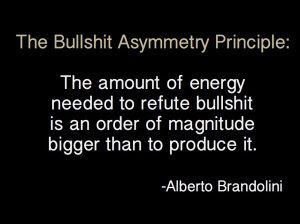
Of course the obvious thing to say here is that the anti-science movement often don’t see themselves as anti-science and will use similar tactics. They will familiarise themselves with the science in order to dismiss it. This is possibly the most annoying part of science communication, those imbedded in anti-science positions aren’t ignorant of the facts, they are wilfully ignorant of their fact-ness.
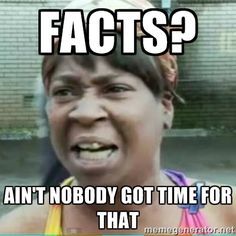
Tagged: Alberto Brandolini, Anthropogenic global warming, anti-GM, anti-GMO, anti-science, Anti-Vaccination, Bill Maher, Bjorn Lomborg, Bret Stephens, climate change, Climate change denier, Conservative, David Avocado Wolfe, Gish Gallop, GM, GMO, Liberal, Myths, Right What You No, Science, The Bullshit Asymmetry Principle, Tyson Adams, Vaccination

May 27, 2015
Book review: The Dying Hours by Mark Billingham
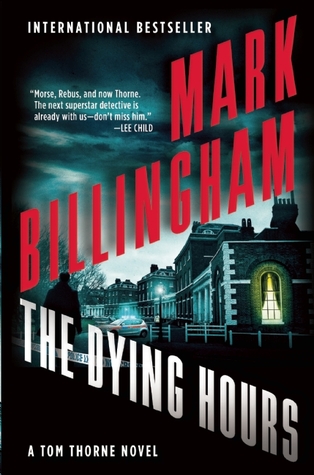 The Dying Hours by Mark Billingham
The Dying Hours by Mark Billingham
My rating: 2 of 5 stars
I’ve always wondered how many professional killers like to stage suicides. Purely on an intellectual curiosity basis of course. Honest.
Mark Billingham’s The Dying Hours is another in the successful run of Tom Thorne crime novels. In the last book, Thorne was bumped back down to uniform and is loving it so much that he starts an investigation into a suicide that didn’t seem right to him. It isn’t long before he finds others that aren’t suicides but part of a hit list for a retired criminal. And that’s pretty much the novel summed up.
Therein lies my problem with the book. Crime novels are as full of tropes and cliches as any other genre and there are only so many plots to go around, it is about using the tropes in an interesting way. Billingham is highly regarded and I’ve heard good things about his work, but this story felt flat to me. There were too many well-worn steps being trod over the course of the novel and it bored me. Reading other reviews there were many long time fans who felt the same way.
If you want a standard crime novel, this will fit the bill. But it might be worth checking out the other books in the series, or other works from Billingham, instead of this one.
Tagged: Book review, Book reviews, Books, Crime, crime novel, Mark Billingham, Reading, Right What You No, Tom Thorne, Tyson Adams

May 9, 2015
Book review: Back Story by David Mitchell
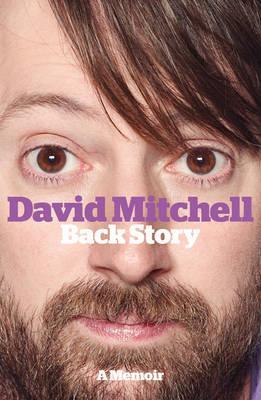 Back Story by David Mitchell
Back Story by David Mitchell
My rating: 5 of 5 stars
There’s no book quite like the autobiography, since they are usually biographies with some poor ghost writer having to make an illiterate celebrity (sportsperson) sound interesting. Odd that I’d decide to read an actual autobiography.
Just so we’re clear, this is a book by David Mitchell the comedian, not David Mitchell the award winning author. David Mitchell is a particularly funny comedian from the UK, one part of the Mitchell and Webb team, and Back Story is his tale of growing up and “getting on the tele”. Listening to the audiobook had the added benefit of David telling his story and giving his various rants and jokes the life they deserved.
That’s right, this book is funny from start to finish. Many comedic efforts fail to do this, either trying to squeeze too much out of a one joke premise, failing to be consistent, or having the jokes become tired – more of the same – somewhere in the middle of the book. Ostensibly told as David walks to work one morning, and recounting his life thus far, he manages to pack in a lot of commentary about schooling, university drama societies (Footlights), and the oddities of making shows for TV. And in true David Mitchell style there are plenty of witty insights, comedic rants, and down the barrel jokes to tell the tales.
I generally think that celebrity biographies are symptomatic of what is wrong with publishing and book stores. Someone has gone to a lot of effort to convince the reading public that these celebrities actually wrote the book (because they have heaps of spare time, and are well known for their writing prowess) and that they have something interesting to tell you that the tabloids haven’t already used as filler around those telephoto swimsuit shots. They’ve even managed to convince people that this is what you buy people as gifts, especially Xmas gifts for your dad. I don’t know if this was a big campaign or just one of those things that happened, but it would be great if people could stop pretending that sports people are interesting, are literate, and are actually writing a tell-all-book.
It is probably because David Mitchell is clearly the writer of this book, that the humour and the story told are entertaining yet honest, that I’ve enjoyed this autobiography. Too often in the past I’ve been disappointed with biographies and comedy books, so this was not just a good read, it was refreshingly good.
Tagged: Autobiography, Biography, Book review, Book reviews, Celebrity, Comedian, comedy, David Mitchell, Funny, Humor, Humour, Memoir, Mitchell and Webb, Reading, Robert Webb, Tyson Adams

May 6, 2015
Surviving animal attacks
Being an Aussie people kindly send me advice on how to not be killed by animals. Yes, we do have some decidedly deadly animals in Australia, some of the deadliest are not what you would think. But as much as I appreciate the advice, I think it is time that an Aussie set the record straight on how to deal with deadly animals. Let’s start with the most recent piece of advice I received.
Clearly this meme was written by someone from North America, what with the unexotic list of animals (although the meme comes from a UK site). I mean, I know that bears and wolves are scary to some people who have never been to Australia, but we have to remember that the bar is raised when talking to Aussies.
Bears:
You can’t roll toward a bear in Australia as they live in trees and attack from above. The best rule is to use the one borrowed from chemistry, and that is to have a sacrificial (anode) friend with you. This friend should preferably smell delicious; possibly have them carry bacon in their pockets. If someone suggests you carry some bacon then you know exactly how much to spend on presents at Xmas time.
Sharks:
The true nemesis of sharks is dry land, of which we have plenty in Australia. But obviously being so dry we like to crowd down to the coast and chance our hands at being shark food. There are many strategies you can employ on sharks, swimming between the flags being the most popular, as everyone knows flags terrify sharks. Another strategy is having American friends, because sharks love the deep fried marinade of their flesh. In a pinch, there are also plenty of Aussies who could be mistaken for Americans, so just swim with one of them.
Wolves:
These aren’t particularly common in Australia. Instead we have the Dingo. These are actually pretty safe to be around as long as you are over the age of two. Unless we’re talking about Hugh Jackman, in which case just play a samba beat.
Geese:
When you are attacked by a goose you just have to accept that you’re going to get bitten. Repeatedly. Geese aren’t apex predators without good reason, but they prefer to eat their prey live and running. As long as you can stay mobile and find a fortified position, such as a bank vault or a KFC, you should survive. Remember to clean and dress your gaping wounds, sepsis is a common cause of death. If there is more than one goose you’re done for, just try to throw your final letter clear of the carnage.*
Wasps:
The only reason people have geese is because they are the only thing terrifying enough to take on wasps. So if you have a bank vault or run a KFC you should be able to avoid wasps. If you don’t then buy a shotgun and practice.
Snakes:
Unlike many other countries who measure snakebites in terms of whether you need to visit a hospital, Australia measures snakebites in terms of minutes until death. The main piece of advice for people thinking of visiting Australia is to not get bitten. Actually, that’s good advice for every Australian animal, since they are all poisonous, or big enough not to need poison. Actually, it’s also good advice for plants, since those are poisonous too. Most Australians prefer to run over snakes with their car, then drop a boulder on them.
Spiders:
The humble spider is a much misunderstood animal. Yes, they are deadly, but in a country like Australia that is par for the course. The fact is that spiders are actually quite cuddly, once you get past the poisonous pincers. They are also easy to train, much easier to train than combat troops. As a result Australia doesn’t have a tank division of the army, but instead has a spider division. Think twice before invading.
Crocodiles:
Yes you should be afraid of crocodiles. Deep down I’m afraid of any apex predator that lived through the K-T extinction. Physically unchanged for a hundred million years, because it’s the perfect killing machine. A half ton of cold-blooded fury, the bite force of 20,000 Newtons, and stomach acid so strong it can dissolve bones and hoofs. But the trick is to keep the animal around that does this to crocodiles:
Which animal is that, I hear you ask. Which is odd given this is a written article. The answer is the Australian Budgerigar. Don’t let its small size and cuteness fool you, they form large deadly flocks of ravenous skyborne killers.
Cats:
Let’s be clear: cat’s are m@#$er-f@#$ing dangerous. They are sneaky, silent, killing machines with the world renowned ability for invulnerability and regeneration. How can you possibly take on this harbinger of death that will survive dying repeatedly? Attack it ten times.
This is just a taste of Aussie animal survival techniques. There are obviously many more deadly animals (read: all of them) with advice varying from the examples above to emigrating to a safe country, preferably one that allows the importation of Vegemite.
*A final letter is an Australian government required document that all Australians must carry upon their person at all times. In the event of likely untimely death it acts as the final thoughts and wishes for the deceased, usually just short goodbyes to loved ones and reminders to take the bins out.
Tagged: Aussie, Aussie Animals, Australian, Bears, Budgerigar, Cats, Crocodiles, Deadliest Australian Animals, Deadliest creatures, Dingo, Geese, Goose, Hugh Jackman, Humor, Humour, Right What You No, Sharks, Snakes, Spiders, Survival, Survive animal attacks, Tyson Adams, Wasps, Wolverine, Wolves

April 12, 2015
Beware the meme!
Memes fly around the internet like quantum accelerated particles. Some are fun, some are informative, others are utterly ridiculously wrong. Unfortunately people get caught up in pretty pictures with inspiring – or is that insipid – quotes printed on them, so they start following someone on social media, someone who spreads as much nonsense as inspirational quotes.
Take for example this quote from Mark Twain:
At face value there is a great message from Twain about not storing up emotional baggage. Let’s just ignore the scientific inaccuracy of how acids work and how the materials of the respective containers and the Ka (acid dissociation constant) of the acid are going to be the deciding factors in how much damage the acid does. But once you move past the quote and pretty picture you start to notice certain things about the picture, namely that there is some weird design stuff going on it. There’s some spacey looking stuff in the background, there’s a person with no skin, and some sort of lattice work design: what the hell is this stuff? That’s called the Flower of Life, something that has been incorporated into Sacred Geometry, a load of nonsense that would have Mark Twain penning scathing insults toward; Twain loved science.
Let’s take a look at another meme:
 Again we have a bit of text that implies that good relationships are much deeper than the shallow, fleeting, physical attraction. This one is, however, more obvious in its ridiculousness. In amongst the rainbows and pretty city the two outlines of people are hovering above, there are glowing lights in the bodies of the people. Take a guess at what they are meant to be. Chakras. That’s right, we’ve gone all new-agey nonsense right out in the open. So once you spot the new-age nonsense you realise the word “soul” isn’t being used in the allegorical sense but in the “I believe all sorts of rubbish” sense.
Again we have a bit of text that implies that good relationships are much deeper than the shallow, fleeting, physical attraction. This one is, however, more obvious in its ridiculousness. In amongst the rainbows and pretty city the two outlines of people are hovering above, there are glowing lights in the bodies of the people. Take a guess at what they are meant to be. Chakras. That’s right, we’ve gone all new-agey nonsense right out in the open. So once you spot the new-age nonsense you realise the word “soul” isn’t being used in the allegorical sense but in the “I believe all sorts of rubbish” sense.
And now we descend into health nuttery: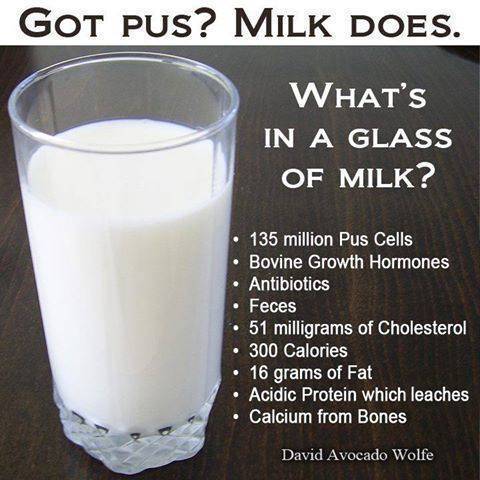
This is a typical health meme that these sorts of social media pages post: half truths, misconceptions, lies and nonsense.
Let’s start at the top: there are no pus cells in milk. The meme seems to be referring to the somatic cell count of milk, which is not the same thing, and just part of the biology fail on display here. The 135 million figure is from the detection levels for mastitis in cows, which says that uninfected cows will have less than 150,000 cells/mL (they’ve clearly scaled up to a litre of milk in that glass, which doesn’t look like a litre glass to me).
Growth hormones: misleading at best. Food has hormones in it, produced by the food, be that plants or animals. Remember how soy is meant to be good for menopausal women? Yep: plant hormones. So milk will have naturally occurring hormones in it. Some countries have limited/banned the use of growth hormones in animal production, others have allowed it. And this brings us to one of the many reasons pasteurisation is used in milk production, as it breaks down most of the hormones.
Antibiotics: nope, they test every truck of milk as it leaves the farm gate to make sure there is no antibiotic contamination.
Feces: again this is misleading, and also one of the main reasons for pasteurisation. You aren’t so much going to end up with feces in the milk as the bacteria associated. So it is important to kill the nasties and why raw milk is considered dangerous.
Cholesterol: I’m not sure where they got the figures from but they seem to be assuming 200 mL of full fat milk. Odd considering they were assuming 1,000 mL for the pus/somatic cells. Yes, milk has 24 mg of cholesterol per 100 mL. And that isn’t necessarily a bad thing.
Calories: I’m not sure why food having calories in it is bad…… Figures are roughly correct for 200 mL of full fat cows milk though.
Fat: Again, I’m not sure why food having fat in it is bad.
Acidic protein: This one is quite funny because there are a lot of acidic proteins. And obviously these acidic proteins leaching calcium from bones is one of those things that “mainstream medicine is ignoring” – aka the rallying cry made by purveyors of nonsense. Pity that dietary protein (which can include dairy) has actually been shown to be good for bones. The issue here is actually a couple of health myths. The first is the acid/alkaline diet that is utter nonsense. The second is the overstating of health benefits of milk, specifically as they relate to bone health and osteoporosis development.
Now I’m not saying that milk is bad for you, but it also isn’t the most awesome drink ever made – that would be whiskey. Milk should be like whiskey: consumed in moderation.
The point about memes is that they are only as good as their creator. The intention of the above memes is clearly to help people, inspire them to lead better lives, even if it is by showing them some pretty pictures with brain droppings written on them. But sadly it is obvious that these memes were created by someone who is not in touch with reality, which makes their health advice something to be avoided. Beware the meme: it could be nonsense!

Tagged: acid dissociation constant, Acid/Alkaline diet, Acids, Alt-health, Antibiotics in milk, Calories, Chakras, Cholesterol, David Avocado Wolfe, David Wolfe, Fat, Flower of Life, Health, Health nuttery, Hormones in milk, Mark Twain, meme, Memes, Milk, Mythtaken, New-age, New-age nonsense, New-age woo, Nonsense, Pasteurisation, pretty pictures, Pus in milk, Right What You No, Sacred Geomtry, Science, Social media, Tyson Adams, Woo

April 10, 2015
Book vs Movie: Fight Club – What’s the Difference?
Another great instalment from the Cinefix team.
A point I’d make about the final chapter of the novel is that I thought the implication was that the narrator was so drugged up in the mental hospital that he wasn’t sure what was going on. And I also thought that the people with the tell-tale bruising were the Project Mayhem members implying they were waiting for him to escape so they could try again.
Also one plot point I really liked in the book was the bit about the type of explosive used, the Narrator preferring one, Tyler the other. This explained why the explosives failed and also implied that the Narrator had been able to sabotage the plan.
Tagged: Adaptation, Book adaptation, Book to movie, Book versus Movie, Book vs Movie, Brad Pitt, Chuck Palahniuk, CineFix, Edward Norton, Fight Club, Plot differences, Right What You No, Tyson Adams


